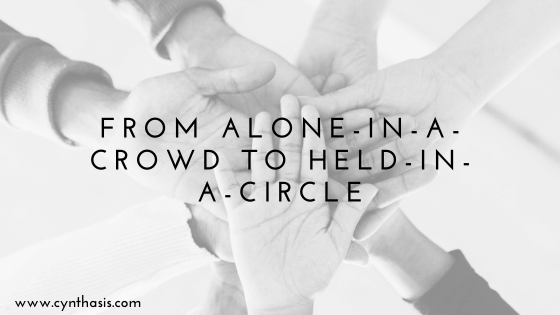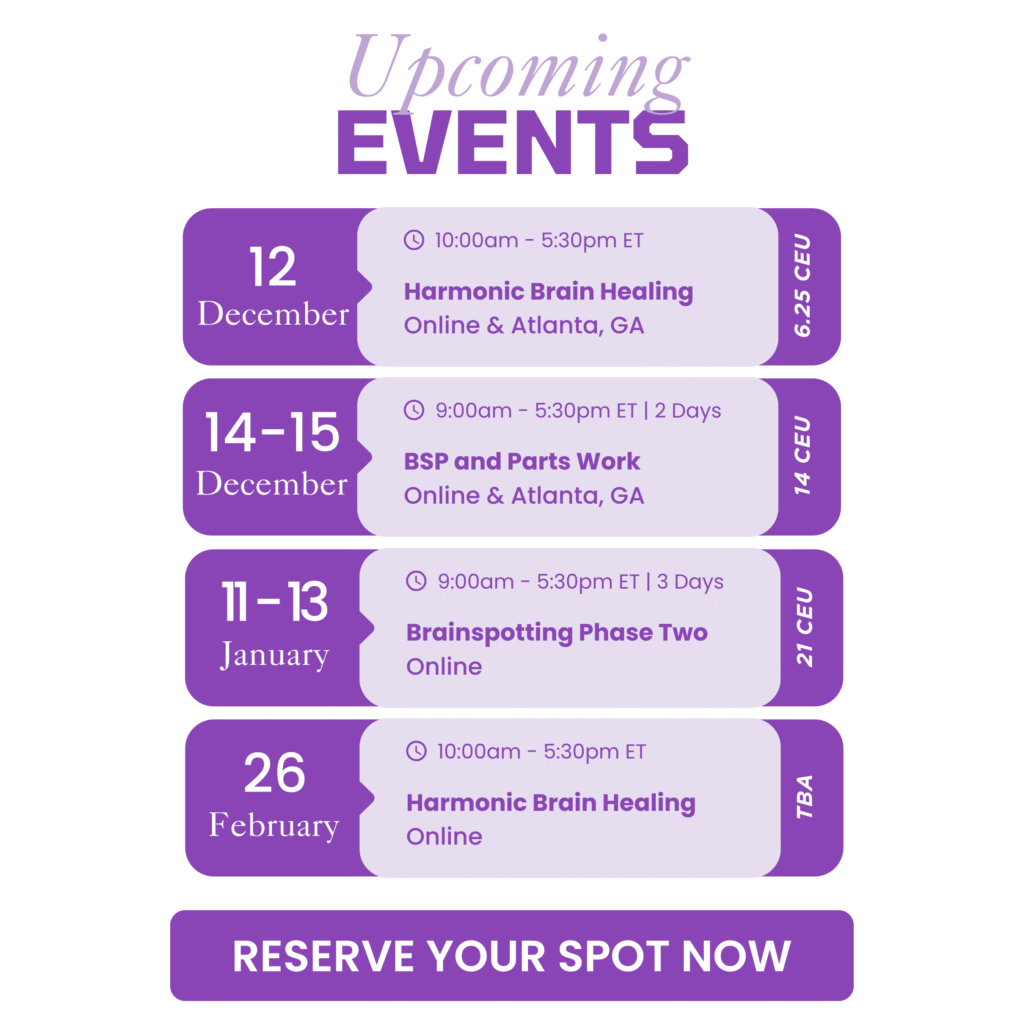Have you ever felt stuck on where to go with a client? Or, how to expand your practice but not want to stop using all the wisdom you have learned to date? In the ever-evolving field of psychotherapy, it’s crucial for therapists to stay informed about innovative techniques that can elevate their practice and provide more effective treatment for their clients. One such approach I have developed is ImageSpotting, combining Brainspotting, Counting and Revisioning. In this blog post, we’ll delve into the transformative power of ImageSpotting, and how it can enhance your psychotherapy practice and contribute to better client outcomes.
psychotherapy, it’s crucial for therapists to stay informed about innovative techniques that can elevate their practice and provide more effective treatment for their clients. One such approach I have developed is ImageSpotting, combining Brainspotting, Counting and Revisioning. In this blog post, we’ll delve into the transformative power of ImageSpotting, and how it can enhance your psychotherapy practice and contribute to better client outcomes.
As stated, ImageSpotting is an integrative model incorporating Brainspotting, the Counting Method, and Revisioning. Let’s now explore each and how it contributes to ImageSpotting. Each model is powerful and all three together work wonders to shift stuck thoughts and visual images in a grounded resourceful space for clients.
What is Brainspotting?
 Brainspotting is a neuroscientific approach that has revolutionized the field of psychotherapy. It targets healing and trauma through working with the client’s innate wisdom to heal themselves. It is a resource model supporting clients to release trapped trauma in their thoughts and bodies. Many people come to us because they do not feel heard and understood. Brainspotting provides a space for the client to be received by the therapist in a state of compassionate attunement guiding the client to their own wisdom. The therapist does not have to figure out the client, rather they support the client to discover their own healing. It is an integrative model to support and enhance the therapists’ clinical skills.
Brainspotting is a neuroscientific approach that has revolutionized the field of psychotherapy. It targets healing and trauma through working with the client’s innate wisdom to heal themselves. It is a resource model supporting clients to release trapped trauma in their thoughts and bodies. Many people come to us because they do not feel heard and understood. Brainspotting provides a space for the client to be received by the therapist in a state of compassionate attunement guiding the client to their own wisdom. The therapist does not have to figure out the client, rather they support the client to discover their own healing. It is an integrative model to support and enhance the therapists’ clinical skills.
The Brainspotting method allows therapists to effectively address trauma, negative patterns, and unresolved emotional issues by finding relevant eye positions connected to an issue and body sensation. The ImageSpotting process taps into the use of the eye positions as both resourceful and gaining access to subcortical material. As William Shakespeare states, the eyes are the window to the soul. It is through our eyes that we receive approximately 80% of our impressions. The eyes carry visual images to our brain where we process information based on life experiences and many other complex systems. We tend to rely more on sight for information about our environment versus hearing or smell. Brainspotting harnesses and uses this information in the part of the method called focused mindfulness.
material. As William Shakespeare states, the eyes are the window to the soul. It is through our eyes that we receive approximately 80% of our impressions. The eyes carry visual images to our brain where we process information based on life experiences and many other complex systems. We tend to rely more on sight for information about our environment versus hearing or smell. Brainspotting harnesses and uses this information in the part of the method called focused mindfulness.
Counting Method
The Counting Method is a technique widely used in various therapeutic modalities to promote emotional regulation and grounding. Integrating the Counting Method developed by Frank Ochberg, MD which is used with Prolonged exposure is highly effective to supporting a resourceful environment for the client to work. The client is offered the opportunity to gain the sense of not being alone in their trauma as they hear their therapist count out loud while recalling a painful experience(s). It can be very grounding especially combined in a trusted working relationship between client and therapist.
Revisioning
 Revisioning combines visualization with cognitive reframing. It is a therapeutic technique that invites clients to reinterpret and redefine their personal narratives. By challenging negative beliefs and reframing past experiences, revisioning empowers individuals to construct a new and empowering narrative for their lives. This process helps clients gain a fresh perspective, release limiting beliefs, and cultivate resilience and self-compassion.
Revisioning combines visualization with cognitive reframing. It is a therapeutic technique that invites clients to reinterpret and redefine their personal narratives. By challenging negative beliefs and reframing past experiences, revisioning empowers individuals to construct a new and empowering narrative for their lives. This process helps clients gain a fresh perspective, release limiting beliefs, and cultivate resilience and self-compassion.
Combining Brainspotting, Revisioning, and Counting into the ImageSpotting process clients are able to release tragic painful experiences, images in their mind that have played over and over for years, shifting repetitive dreams and stopped compulsive behaviors and/or thoughts.
For example, someone came to me with an image of a car accident they witnessed. The scene of the accident was stuck in their head. Through ImageSpotting, they were able to feel compassion for the victims of the accident but not take it on as their personal experience. Therapists have come to me with Secondary Trauma and in a short time we have been able to shift their relationship to the clinical experience and their client. If you are struggling with stuck thoughts or images from past sessions and/or have clients who can not seem to shift you may want to learn more about Imagespotting. Click here for more details.








